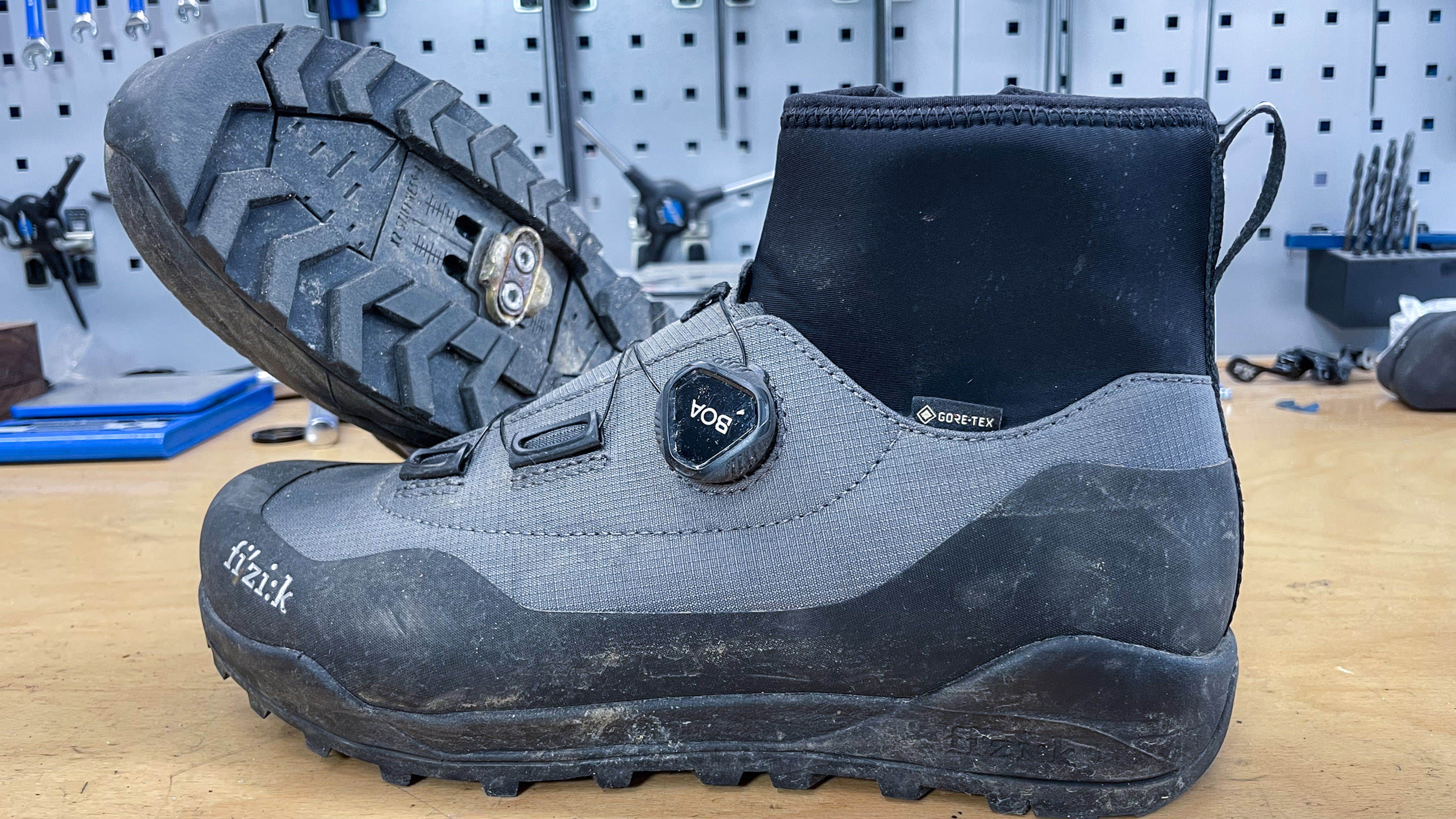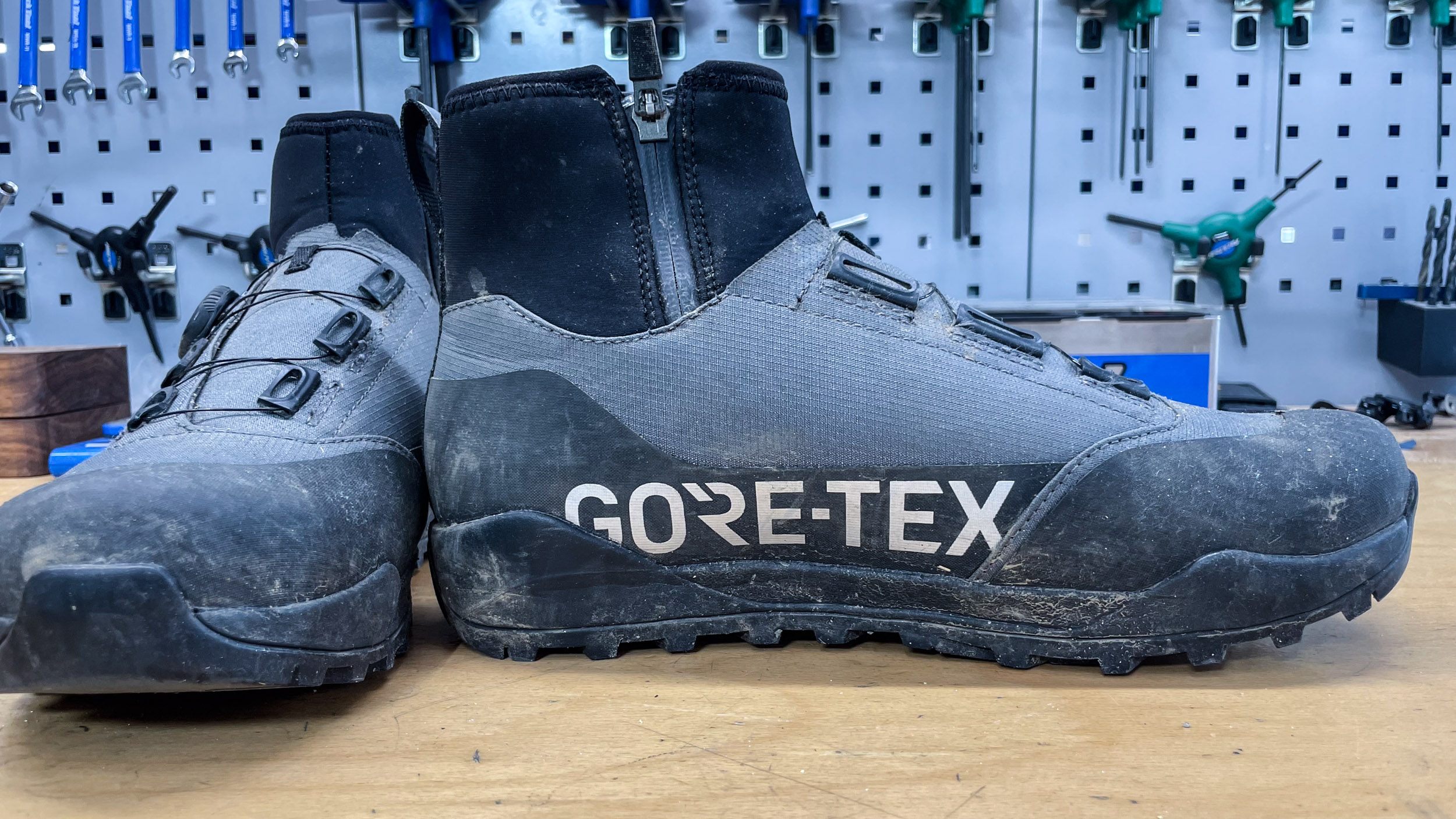

The Fizik Nanuq GTX shoes were unveiled in late November, right on time with the start of the cold season, at least according to the calendar. In practice, winter temperatures have been waiting for another month, so now we are ready to present their test.
I’ve always been happy with the fit and comfort of Fizik shoes, both MTB and road bike. The Nanuq GTX are no exception: the 42.5 is perfect for my foot, which is also the shoe size I usually use. Even wearing a winter sock like the Fox Defend Winter I had no annoying pressure points, despite the fact that the shoe can be divided into two almost separate parts: the Goretex boot and the neoprene part on the ankle.


The former is rather stiff on the edges, while the latter is very soft and is closed via a zipper on the inside of the foot, the one toward the bike. The structure of the bootie is almost boot-like: very sturdy, with a reinforced toe and heel and a Vibram sole with which you can walk very well even in the snow. Added to this is a very breathable yet waterproof Goretex membrane, with a fast and strong Boa system. When you slip your foot into the shoe you will need to lift the part under the Boa laces slightly, because the material is stiff.
As you can see from the photo, the channel for the cleat is long and allowed me to put it in a rather backward position, which is what I prefer in order not to strain my calves on the downhills and at the same time be able to pedal well uphill. In this regard, it must be said that the stiffness of the sole helps a lot in transmitting force to the pedals, without dispersion due to too much flexibility.
I put a shim under the Crank Brothers cleat, which is 1 millimeter lower than the Shimano ones, and the engagement and disengagement operation was always easy, without the sole going to get caught in the pins of the Mallet E. In fact, there are no signs of wear on the rubber around the slide. The cleat does not touch the ground when walking. The Vibram compound is quite hard, on the other hand this is a quick release shoe and the surface area on the pedal provides all the grip you need.
I was telling you about the sturdiness of the Fizik Nanuq GTX: despite the low weight, these are shoes you can ride enduro with no problem. The front part is very solid and perfect to protect the foot from impacts with rocks or stones shot by the front wheel. If we really want to see a weakness, we find it of the Boa wheel, which, however, can be replaced without problems in case of breakage. On the other hand, the Boa system is really convenient for fine adjustment even while you are pedaling, but only in the direction in which you tighten the laces. To decrease the tension you will have to raise the wheel, so it is not the bidirectional Boa.
Another shortcoming of neoprene is that it is not waterproof, so while the bootie does its job well in keeping water out, splashes that reach the ankle penetrate the shoe. The neoprene prevents snow from entering from above, as well as mud or various debris, partly because it is tight to the ankle once the zipper is closed. It is then very soft, leaving the ankle free to move when pedaling.
Fizik Terra Nanuq GTXs find their ideal use for temperatures below 6-7° Celsius, otherwise they become too warm, even with a non-winter sock.
Today Crankbrothers is launching two new sets of handguards dubbed the Guardian Universal and Guardian…
This past Fall I had an opportunity to test the new Transition Sentinel and was…
If you’ve removed all of your volume reducers but still aren’t getting enough travel on…
After close to a year's time spent aboard the newly updated MY25 Fox 38, it's…
Last Winter Push Industries unveiled a new shock dubbed the SV Eight. The new damper…
In July I attended the launch of a new bike which I've given very high…